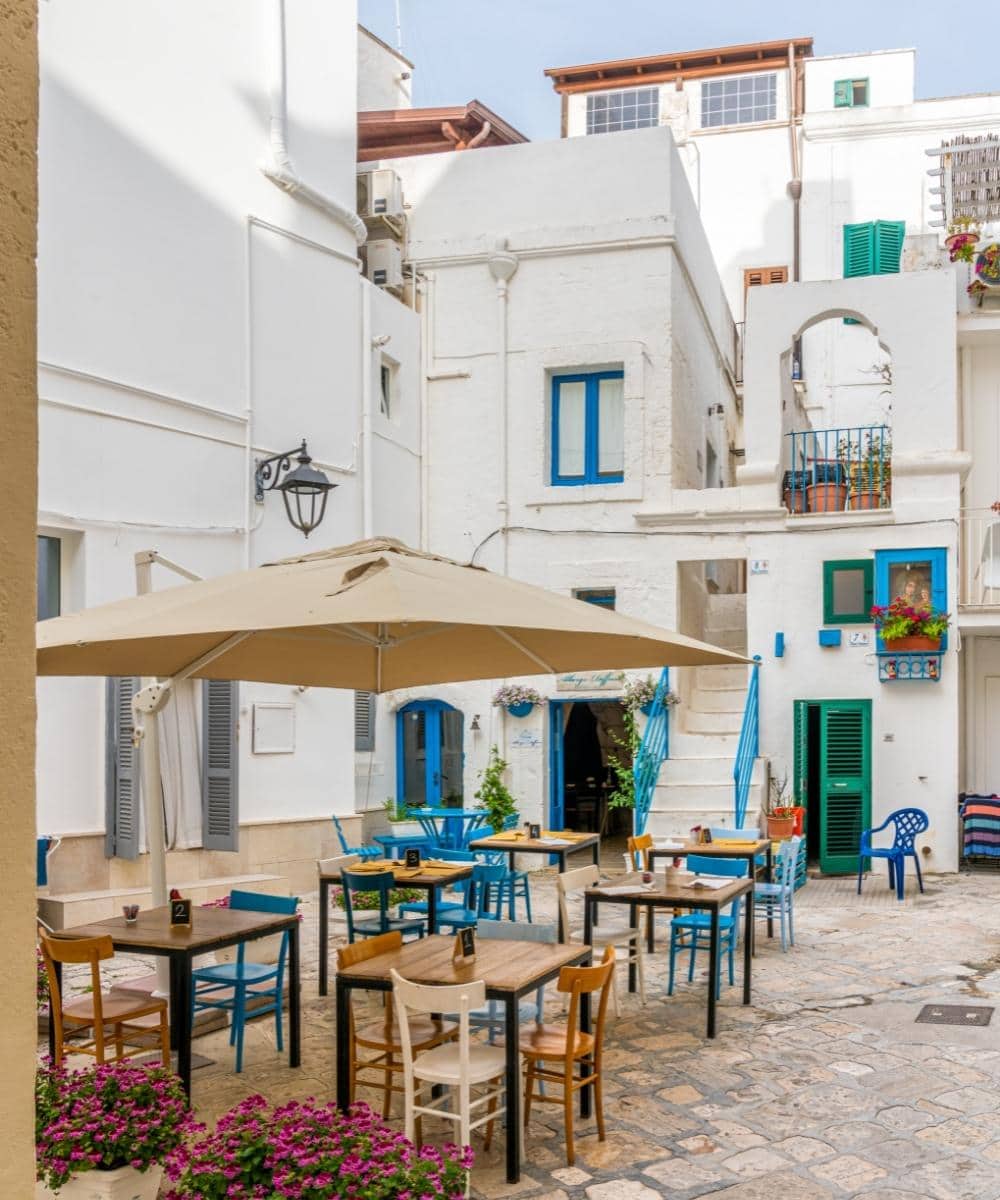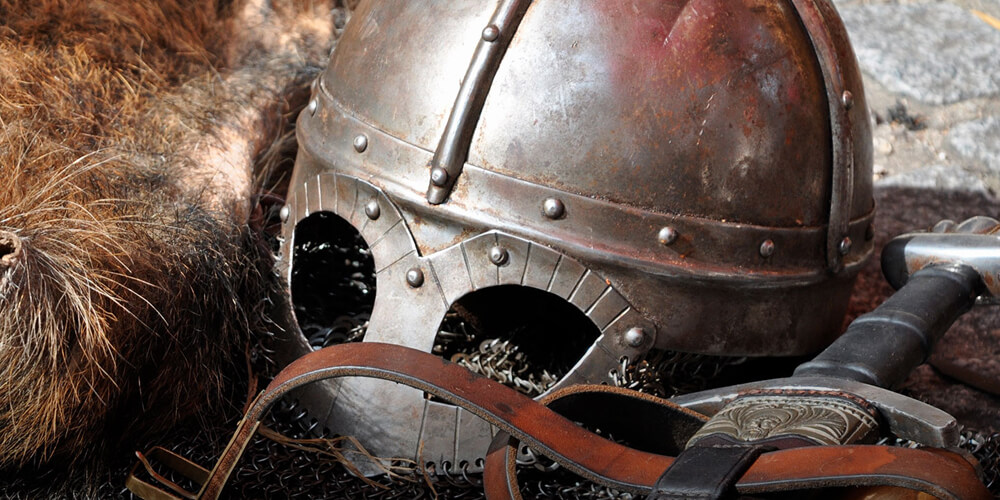There is a Beauty that reveals itself in the light of day: the beauty of the sea that shimmers in the dawn's rays, of the ancient buildings reflected in the water of a small port, of the alleyways that wind their way through the houses, shops and bars... Then evening falls, the artificial lights come on and other places come to life, animated by the nightlife.
And then there is another Beauty, which runs through the words of history books and is imprinted in ancient symbols on monuments, churches, gates. They are the signs of ancient orders of knights, brave men, protagonists of a past that still makes you dream. Did you know that the Crusaders and Knights Templar passed through Monopoli, city in the province of Bari?
In the darkness of the night, a shiver caresses our skin as we listen to the rhythmic sound of the waves. We seem to hear in the wind a clinking of swords and words telling stories of a thousand years ago. We close our eyes, take a breath, and a journey between the sacred and the profane begins, one that is hard to forget. Who knows where he is taking us?

The castles of Monopoli and the Knights of Malta

A fortress jutting out over the water observes anyone arriving on the Monopoli coast from the sea. It is the 16th century, the city walls have been destroyed and the king has ordered the construction of a castle incorporating the ancient Norman tower. Charles V's castle has a polygonal plan with towers at the top. On the pentagonal bastion you can see a coat of arms with the date of construction (1552) and the name of Don Pedro de Toledo, the illustrious viceroy who oversaw the construction of the structure.
But this is not the only castle in Monopoli. A few kilometres from the eastern entrance to the town, there is a splendid fortified complex on an ancient spur of rock. Santo Stefano Castle, also known as Santo Stefano Abbey, has a very eventful history. It began as a monastery of Benedictine monks, then became a hospital of the Hierosolimitan order; at the end of the 13th century, the Knights of Malta moved in to control traffic to the Holy Land. The Order's abbey-mansion equipped ships with everything they needed for their voyage, and Monopoli became an important crossroads for travel and contact with the East during the Crusades. In the Middle Ages, the city was a lively and vibrant place, with streets swarming with pilgrims, nobles, knights, merchants and religious people ready to embark on a long journey driven by faith or economic interests.
The “holy town”: in the footsteps of the Knights Templar and the Knights of Malta

Walking slowly through the cobbled streets of the centre, we come to Largo San Giovanni. Here is the ancient church of San Giovanni, another place that bears the mark of the Hospitallers of Jerusalem (the military and religious order of St John of Jerusalem, later renamed the Knights of Rhodes and then the Knights of Malta). It was built on the site of a 15th-century construction and rebuilt in 1707 by Brother Domenico Recco, a Commander of the Order of the Knights of Malta. Over time it was deprived of all its works, but the Maltese cross located above the building's portal still recalls its glorious past.
The famous Knights Templar were very active in Apulia and usually stayed in churches, cathedrals or farms. Their history is very fascinating and troubled, and over the centuries has inspired legends, books and films. The chivalrous order of monks-fighters was born in the Holy Land around 1119 to protect pilgrims. It saw its power and wealth grow until it was declared heretical. The Holy Inquisition began a harsh persecution of its members and finally the Order was dissolved in 1312 with the bull "Vox Clamantis In Excelso" by Pope Clement V. However, not all of them were lost. Various traces have been found that can be traced back to the 'Poor Knights of Christ and the Temple of Solomon', such as concealed symbols and others that are more easily visible. They seem to have left signs of their presence in the town of Monopoli too, such as the Patente crosses inside some rock churches and crypts...
The “profane town”: the perfect stop for a drink (and more)

Monopoli is also full of life nowadays. In addition to the beauty of the sea and beaches, the town offers art, elegant buildings, good food and nightlife to suit all tastes.
Piazza Vittorio Emanuele, with its approximately 22,000 square metres, is one of the largest and most beautiful squares in Italy. Since its construction in 1796, it has changed its appearance many times, but has always been a meeting point for all the inhabitants, who affectionately call it the "borgo". From generation to generation, this square has remained the true heart of Monopoli.
We head towards Porto Vecchio, another symbolic place of the town's identity. Here, moored fishing boats rock on the water. All around them, Venetian, Byzantine and Gothic architecture reminds us once again of the cultural and commercial fervour of past centuries.
Evening has arrived and dusk paints everything on which it rests with its reddish colours. Just below the 16th-century walls of the old town, we glimpse the cove of Porta Vecchia, framed by the whitewashed houses of the old town. Here, the cadenced sound of the waves seems to be the most relaxing sound we have ever heard. We have reached the end of our journey. The artificial lights come on and we head towards the centre, curious to discover Monopoli's movida.

Somebody told us that there is more than one way to experience the night here. The old town centre is full of bars, pubs and clubs; in summer, the seafront attracts young people and tourists alike, thanks to the all-night entertainment provided by discos and predisco-bars. If you want to spend a quiet, quality evening away from the crowds, take a seat at Baldovino, in largo San Giovanni. It's a fancy wine bar where having a break, where you can relax with a good glass of wine, excellent aperitifs and fresh fish dishes. You will appreciate the research in the choice of raw materials, the evocative atmosphere and the attention to the customer by the young and talented owners.
Is it really time to go to sleep? On the hotel terrace, while the silence gives way to everything else, sleep is delayed and the mind travels, once again, among the words of a book that tells of the adventures of ancient knights.
About the author
Written on 28/01/2019



Chiara Musino
Monopoli in Apulia is famous for its nightlife and the sea, and hides ancient secrets of the Knights Templar and the Crusades.